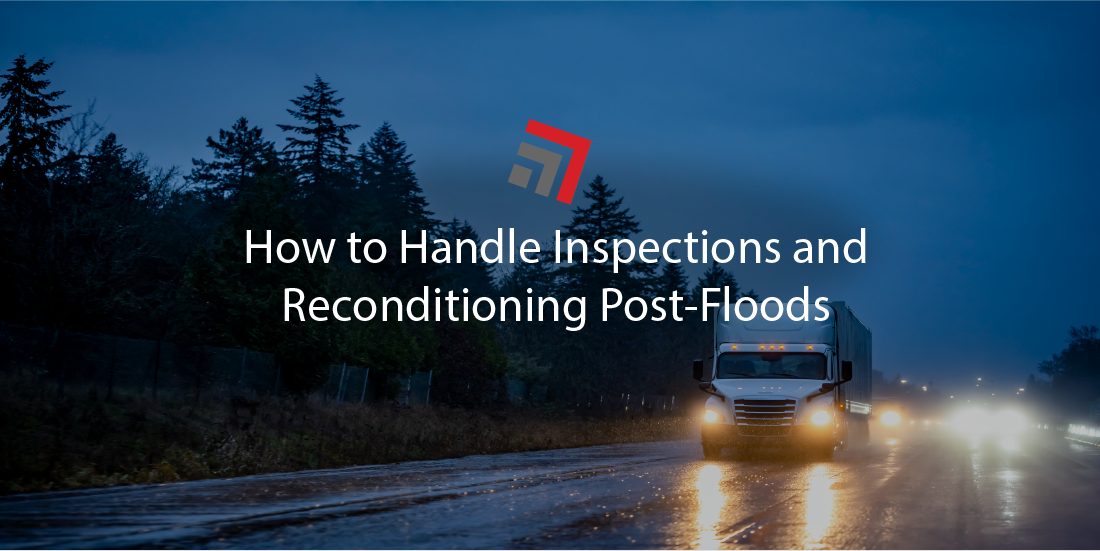With the aftermath from Hurricane Ian lingering, parts of Florida and other states have been experiencing floods. Commercial vehicles are subject to their safety components being partially or completely submerged by those flood waters.
Here are some tips and guidelines on how to inspect and recondition your vehicle post-floods.
Salt Water vs. Fresh Water
If you are running into flooding, the first thing you will want to do is determine if the water impacting the vehicle is salt or fresh water. Why Is that important you may ask…
If it is salt water, you will need to immediately start replacing parts. Salt water has the ability to erode or eat away at the parts and remove lubrication, which can cause those parts to have unexpected and premature malfunction, FleetOwner says. Additionally, any brake system valve that has been submerged in salt water must be replaced.
If it is fresh water, you will begin to cautiously power wash the vehicle. FleetOwner notes that rubber parts and sealing interfaces should NOT be directly sprayed with the high-pressure jet, which is why it is important to be cautious. Another thing to note is to NOT attempt to start a vehicle if fresh water has entered the air compressor or dryers through the air system intakes.
Many experts recommended personal protective equipment (PPE) when washing or working on flooded vehicles – fresh or salt water.
Additionally, if you are unsure, play it safe and follow the saltwater guidelines.
Steps on Checking Parts of the Air Brake System
FleetOwner details a variety of steps on how to check the air brake system.
Vehicle valving
- Inspect each component in the pneumatic brake and accessory systems
- Drain any pressure remaining in the service reservoirs
- Mark and remove all pneumatic and electrical connectors at each valve
- Check for evidence of water or contamination inside the connectors, air hoses, or the component itself
- Carefully use dry compressed air pressure (from a stationary compressor or similar) to blow air through the pneumatic tubes and hoses. Watch for evidence of water or contamination.
- You can read more about the vehicle valving steps, here
Charging system
- Inspect the air intake, compressor, and air dryer for signs of water or contaminant ingestion
- Carefully use dry compressed air pressure (from a stationary compressor or similar) to blow air through the pneumatic tubing and watch for evidence of water or contamination.
- Use dry compressed air from a stationary air compressor (or suitable portable unit) to get any residual water out of the service tanks
- Air dryers remove moisture in compressed air, but they will not remove moisture that’s present in the system beyond the service tanks
- After reconnecting pneumatic lines, install a new or properly serviced air dryer to aid in removing any residual moisture from the air inlet
Additionally, once water or contaminants get into any of the air brake components, it is impossible to completely clear the system without total disassembly.
Wheel-ends and electronics
It is important to examine all wheel-ends for water – which has the potential of corrosion between drum brake lining material and the shoe table (rust jacking), and can also pool in drums when left standing, increasing the risk of corrosion, as FleetOwner notes.
In addition, checking for water pooling in drums, corrosion between brake lining material, the integrity of the friction couple between the friction and disc or drum, and removing any fittings and mounting stud nuts for any water exposure, are important things to do – Trucking Info reports.
Looking Ahead
Hurricanes can have major impacts on the trucking industry and it’s important truckers know how to prepare before, during and after a hurricane.
As always, we will continue to provide updates on the latest in the industry throughout the year and beyond. Should you have any questions or comments, please don’t hesitate to reach out to our team today!



Recent Comments